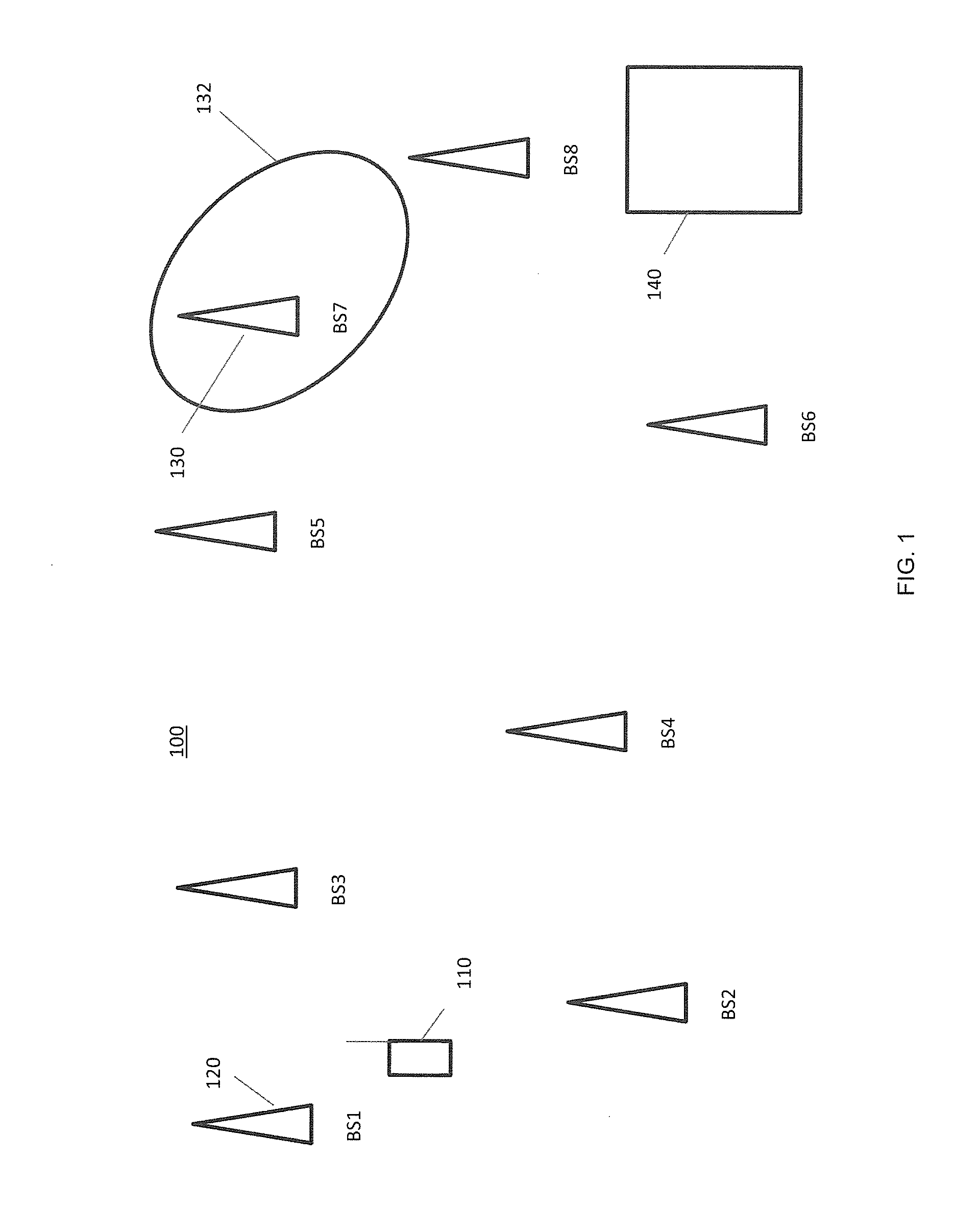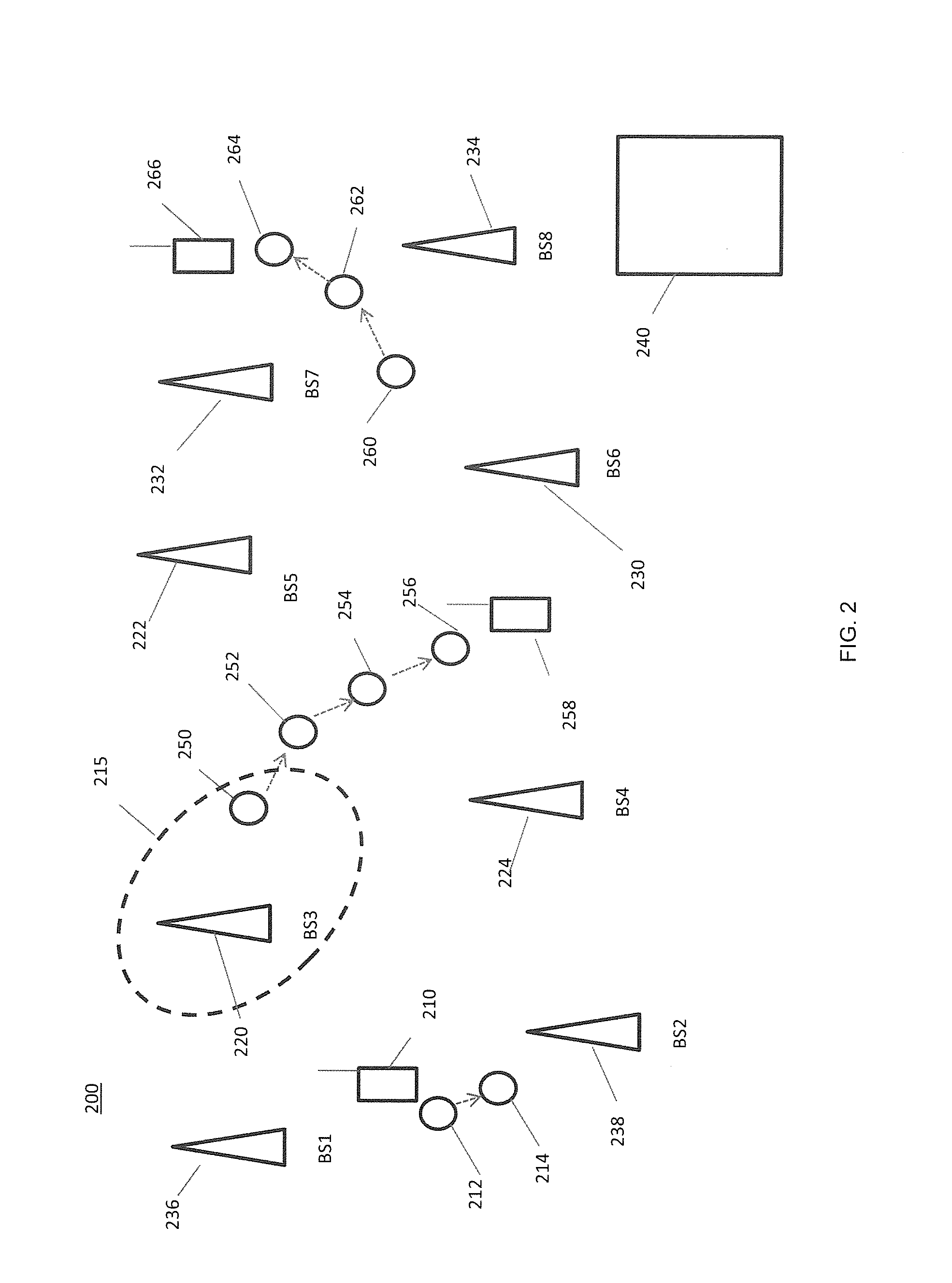Mobile geolocation
a mobile communication unit and geolocation technology, applied in the field of mobile geolocation, can solve the problems of inability to accurately calculate the received power as a function of distance, inability to accurately calculate the received power, and inability to use differential power techniques
- Summary
- Abstract
- Description
- Claims
- Application Information
AI Technical Summary
Benefits of technology
Problems solved by technology
Method used
Image
Examples
Embodiment Construction
[0035]A cellular wireless communications system is provided. The cellular wireless communication system may, for example, operate in accordance with the GSM, UMTS or LTE standards. The cellular wireless communications system comprises network nodes and mobile communication units. Each network node supports communications with mobile communication units in cell.
[0036]A method of estimating a location of a mobile communication unit in the cellular wireless communications system comprises compiling a first signature, for signals received by a mobile communication unit at a first point in time. The first signature comprises: control information; a set of cells, the set of cells being cells observable by the mobile communication unit; and received power level information, for signals received from the observable cells. A particular known signature is then selected from known signatures entered in a database, by comparing the first signature with known signatures entered in a database. Th...
PUM
 Login to View More
Login to View More Abstract
Description
Claims
Application Information
 Login to View More
Login to View More - R&D
- Intellectual Property
- Life Sciences
- Materials
- Tech Scout
- Unparalleled Data Quality
- Higher Quality Content
- 60% Fewer Hallucinations
Browse by: Latest US Patents, China's latest patents, Technical Efficacy Thesaurus, Application Domain, Technology Topic, Popular Technical Reports.
© 2025 PatSnap. All rights reserved.Legal|Privacy policy|Modern Slavery Act Transparency Statement|Sitemap|About US| Contact US: help@patsnap.com



